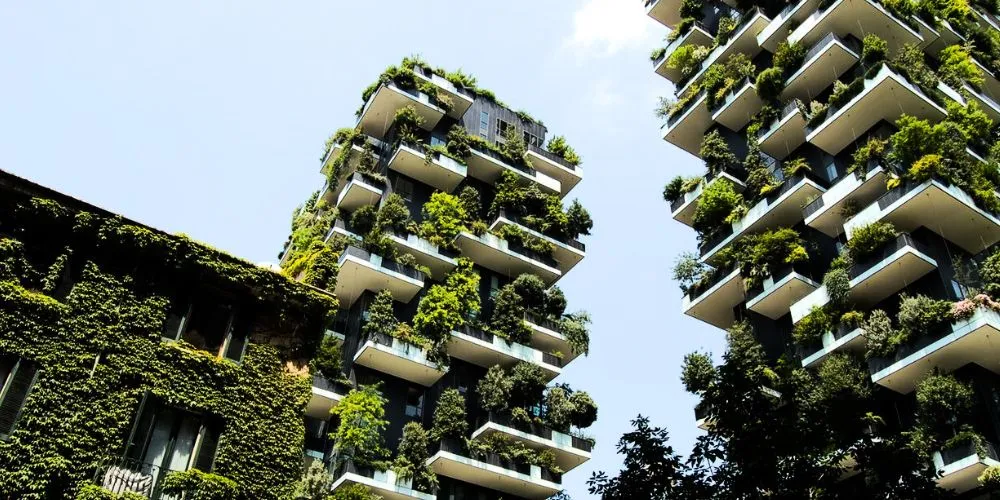Sustainable architecture represents a visionary approach to designing and constructing buildings and spaces, prioritizing environmental responsibility and human well-being. This comprehensive exploration delves into sustainable architecture, uncovering its significance, principles, strategies, applications, challenges, and transformative potential for creating a more eco-friendly and livable built environment.
The Significance of Sustainable Architecture
Sustainable architecture holds immense significance due to its potential to address several key environmental and societal challenges:
Environmental Stewardship
One primary goal of sustainable architecture is to minimize buildings’ environmental impact. This includes reducing energy consumption, conserving water, minimizing waste, and promoting renewable materials. Sustainable buildings are designed to be energy-efficient, emit fewer greenhouse gases, and conserve natural resources.
Human Well-being
Sustainable architecture prioritizes the health and well-being of building occupants. Design principles such as access to natural light, indoor air quality, and ergonomic spaces improve comfort and productivity. Sustainable buildings also foster a strong connection to nature, promoting mental and physical well-being.
Urban Sustainability
Sustainable urban design is vital in creating livable and resilient cities in an increasingly urbanized world. Its principles include walkable neighborhoods, efficient public transportation, and green spaces. Sustainable buildings and communities reduce urban areas’ carbon footprint, mitigate climate change, and enhance quality of life.
Principles of Sustainable Architecture
Sustainable architecture operates on a set of fundamental principles that guide its design and implementation:
Energy Efficiency
Energy efficiency is a cornerstone of sustainable architecture. Sustainable buildings incorporate passive design strategies, high-performance insulation, efficient HVAC systems, and renewable energy sources like solar panels. These measures reduce energy consumption and lower greenhouse gas emissions.
Site Selection and Planning
Careful site selection and planning are essential. They minimize site disturbance, preserve natural features, and encourage responsible land use. Buildings are sited to optimize solar orientation, natural ventilation, and access to public transportation.
Sustainable Materials
The choice of materials is critical in sustainable architecture. Sustainable architects prioritize materials with low environmental impact, including recycled, reclaimed, or rapidly renewable materials. They also consider factors like durability, maintenance requirements, and manufacturing processes’ environmental footprint.
Strategies in Sustainable Architecture
Sustainable architecture employs a variety of strategies to create environmentally responsible and user-friendly buildings:
Passive Design
Passive design strategies maximize natural resources, such as sunlight and natural ventilation, to reduce energy consumption. Features like large windows, thermal mass, and proper insulation help maintain comfortable indoor temperatures without relying heavily on mechanical systems.
Green Building Certification
Many sustainable buildings pursue green building certification programs, such as LEED (Leadership in Energy and Environmental Design) or BREEAM (Building Research Establishment Environmental Assessment Method). These programs provide standardized criteria for assessing and certifying sustainable building practices.
Water Conservation
Water-efficient fixtures, rainwater harvesting systems, drought-tolerant landscaping reduce water consumption in sustainable buildings, and greywater recycling systems further contribute to water conservation.
Renewable Energy
It integrates renewable energy sources like solar panels, wind turbines, and geothermal systems. These sources generate clean energy on-site, reducing reliance on fossil fuels and lowering greenhouse gas emissions.
Applications of Sustainable Architecture
Sustainable architecture has diverse applications across various building types and contexts:
Residential Buildings
Sustainable homes incorporate energy-efficient appliances, passive solar design, and sustainable materials. Features like green roofs and rain gardens enhance sustainability and improve stormwater management.
Commercial Buildings
Sustainable commercial buildings prioritize energy efficiency, indoor air quality, and occupant comfort. Daylighting and efficient HVAC systems reduce operational costs and enhance the workplace environment.
Educational Institutions
Sustainable schools and universities offer students healthy, inspiring, and energy-efficient learning environments. Education facilities set an example for future generations.
Healthcare Facilities
Sustainable healthcare facilities prioritize patient comfort, infection control, and energy efficiency. Natural light and healing gardens contribute to patient well-being.
Cultural and Civic Spaces
Cultural and civic buildings often showcase sustainable architecture. Museums, theaters, and government buildings integrate sustainability with architectural design, creating iconic and environmentally responsible landmarks.
Challenges and Ethical Considerations
While sustainable architecture offers numerous benefits, it also faces challenges and ethical considerations:
Cost Implications
Sustainable architecture can be perceived as costlier upfront due to investments in energy-efficient technologies and sustainable materials. However, these costs are often offset by long-term savings in energy and maintenance expenses. Ethical considerations involve balancing the initial investment with the long-term benefits to society and the environment.
Cultural Sensitivity
It must respect local cultures and traditions. Ethical considerations include incorporating indigenous knowledge, respecting cultural heritage, and ensuring equitable access to sustainable design practices.
Limited Resources
Sustainable architecture projects require resources, including expertise in sustainable design and access to sustainable materials. Limited resources can hinder the adoption of sustainable practices in regions with economic challenges. Ethical considerations include making sustainable architecture knowledge and resources accessible to all communities.
The Future of Sustainable Architecture
The future of sustainable architecture is promising, with growing awareness of its importance in addressing environmental and societal challenges:
Technological Advancements
Advancements in building technology, including smart building systems, advanced materials, and digital modeling tools, are enhancing the design and performance of sustainable buildings. These technologies improve energy efficiency, occupant comfort, and building operations.
Net-Zero and Beyond
The concept of net-zero buildings, which produce as much energy as they consume, is gaining traction. The future of sustainable architecture will see an increase in net-zero and positive-energy buildings, contributing to a carbon-neutral built environment.
Regenerative Design
Regenerative design principles will become more prevalent, focusing on buildings and landscapes that actively contribute to ecological restoration and resilience. It will prioritize regenerative solutions beyond mitigating environmental harm to actively improving ecosystems.
Conclusion
Sustainable architecture is a design approach and a vision for a greener, healthier, and more equitable future. Its significance lies in its capacity to reduce environmental impact, enhance human well-being, and create sustainable, resilient communities. Ethical considerations, affordability, and technological innovations must guide its development and widespread adoption as it evolves.
They envision a future where buildings harmonize with nature, cities are resilient and sustainable, and architecture catalyzes positive change. Sustainable architecture is a powerful tool for shaping a world that respects the planet’s limits, prioritizes human well-being, and leaves a lasting legacy of responsible design for future generations.









